Kalo Dungar – Incredible view of Rann Of Kutch

The main reason to visit this region is for the landscape and it was really worth it. This is really a unique terrain in India.
In our Gujarat road trip , we were particularly eager to visit the Kutch region as the terrain is very unique from the rest of India. So after exploring Little Rann of Kutch which satisfied us in wildlife part , we were eager to visit Great Rann Of Kutch for the landscapes. Great Rann of Kutch is a vast area spreading around 7500 Sq.Km , so after extensive research we decided to stay in Hodka Village which is the center point for birding spots in GRK. The drive to GRK is one of the longest in our road trip as GRK is the northern boundary between India and Pakistan. We decided to do the 350 KM drive with multiple stops on the way as the enroute from LRK to GRK has many ponds and salt pans with good potential for birding. So the plan was to have a stopover at Bhuj before reaching Hodka Village. The journey to Bhuj was eventful in terms of birding as we spotted many raptors on roadsides, ducks like Pochards in the ponds, Dalmatian Pelicans,Flamingos and many other waders in the salt pans.
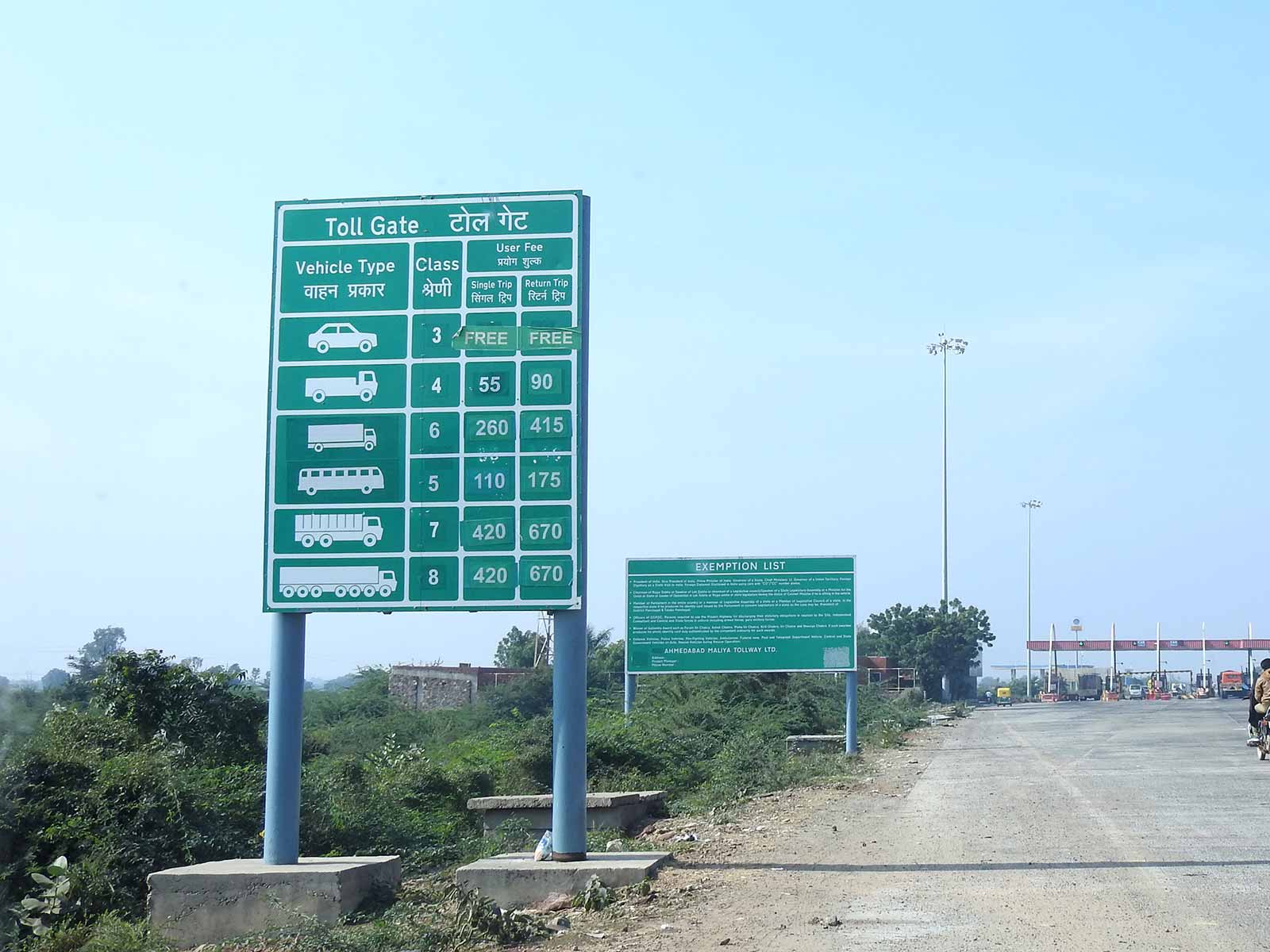
We were really surprised to see the free toll for car in most of the regions we drove in Gujarat. I don’t want to get into politics about that here.
We reached Bhuj sooner than we expected as there was no traffic on the road. While resting in the room , I tried to book online permit for White Rann and Vinod was checking the Google Map to know the route to our resort in Hodka village. We decided to visit Kalo Dungar and then go to the resort. The Mount Karo sits on an elevation 1516 ft and the place is famous for a Dattatreya temple. We were attracted to this place as this is the only location which can give panoramic view of Great Rann of Kutch. As planned , we started our journey to Kalo Dungar before dawn. We were keeping careful eyes on the road and roadsides for hares, nightjars , jungle cats and any other nocturnal beings. While nearing the road to Kalo Dungar, vinod spotted a bird sitting on a tree by its reflection from the eyes. Surprisingly it was a Pallid Scops Owl and he was watching us calculatively with his big round eyes. Even the slight drowsiness I felt was gone after watching this curious Pallid Scops Owl. We continued our drive to Kalo Dungar with an elated state of mind.
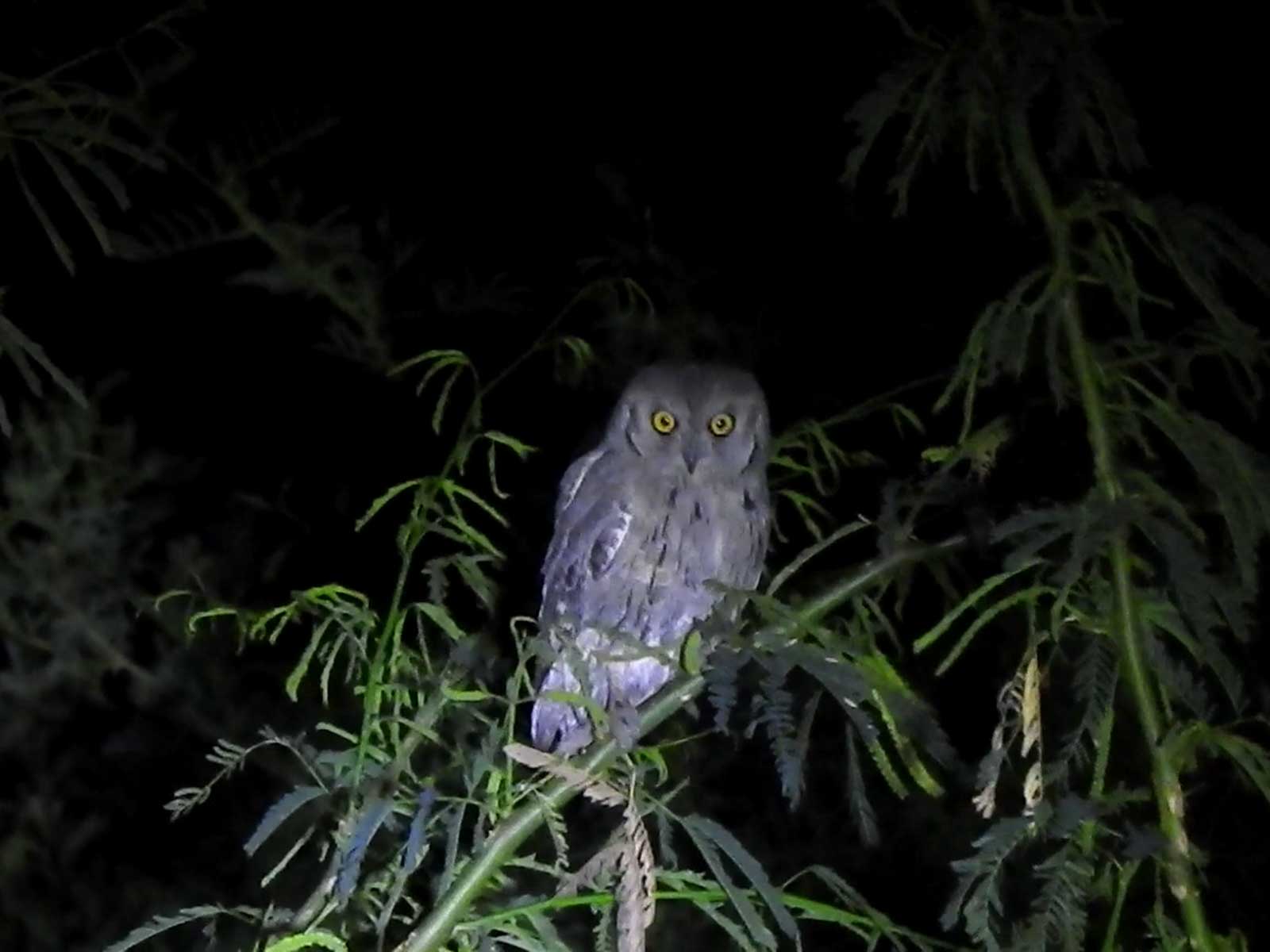
I didn’t expect to see Pallid Scops Owl on roadside, that was really a big surprise.
Birding Kalodungar
I had read about the Magnetic or Anti gravity phenomenon in Kalo Dungar, so I was checking for any change in speed while driving the hills of Kalo Dungar. We didn’t happen to find any changes , so we were just making some funny assessments and reached the spot. There were no tourists but the shopkeepers were roaming around. We climbed on the steps and went to the Sunrise Viewpoint. It was dark , so we patiently waited for the Sunrise. The Sun slowly started coming up but to our disappointment it was behind the mountain infront of us. It looked like the place is best for Sunset rather than Sunrise. The Tailor bird started its daily routine by chriping in high pitch. We started hearing few birds sounds and spotted a pair of small brown birds running on the rocks. When observed carefully, we knew they were the Brown Rock Chats. That was our first lifer in Great Rann Of Kutch region. So we excitedly started our morning birding session on the trail that ran between two mountains.
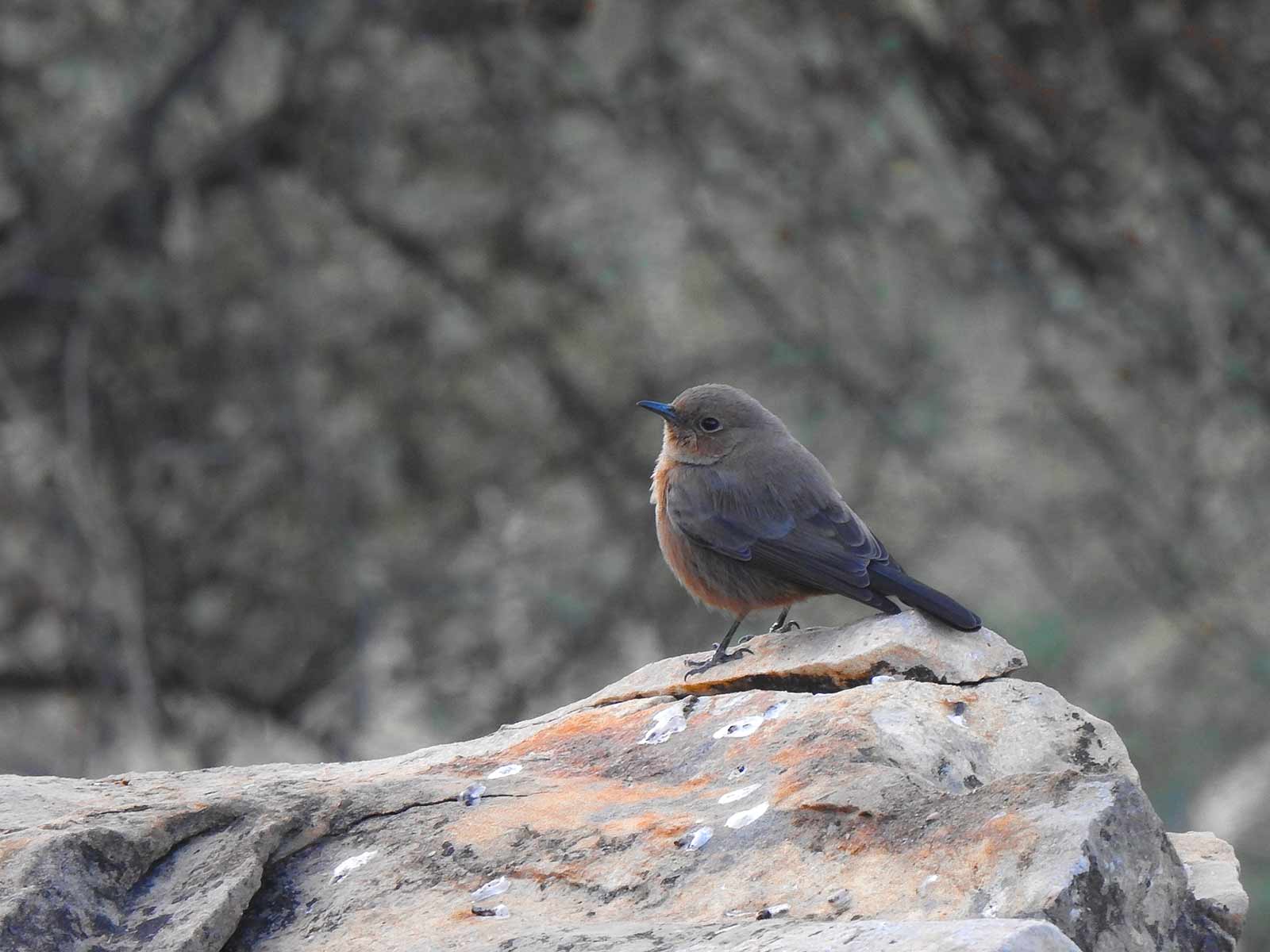
We initially confused this Brown rock chat with Indian Robin female but then the posture was different. This small fluffy bird was very actively watching his rock.
There were few bushes full of berries and a pair of Prinia was enjoying the fruits. We saw a Common Kestrel enjoying his morning swing from one mountain to another. I saw a slender climber with tiny flowers embedded in leaf like white bracts. They looked quite different and later came to know them as Gujarat Spurge-Creeper (Dalechampia scandens). Once we reached the other end of the trail, we saw the distant endless desert terrain. Suddenly a butterfly flew past us and it was a Fritillary. Never in our dreams we would have imagined to see a Fritillary butterfly in that dry zone. While we were talking excitedly about the butterfly , we heard a bell sound. We were wondering whether the cows were grazing even in this terrain and checked in binocular. Vinod was laughing when he spotted the source of the sound and it was from CAMELS! When we returned back to the car parking , the scene had totally changed. Our car was cramped in between buses , tourist vehicles and a couple of camels. Quickly we got away from the hassle and hit the road.
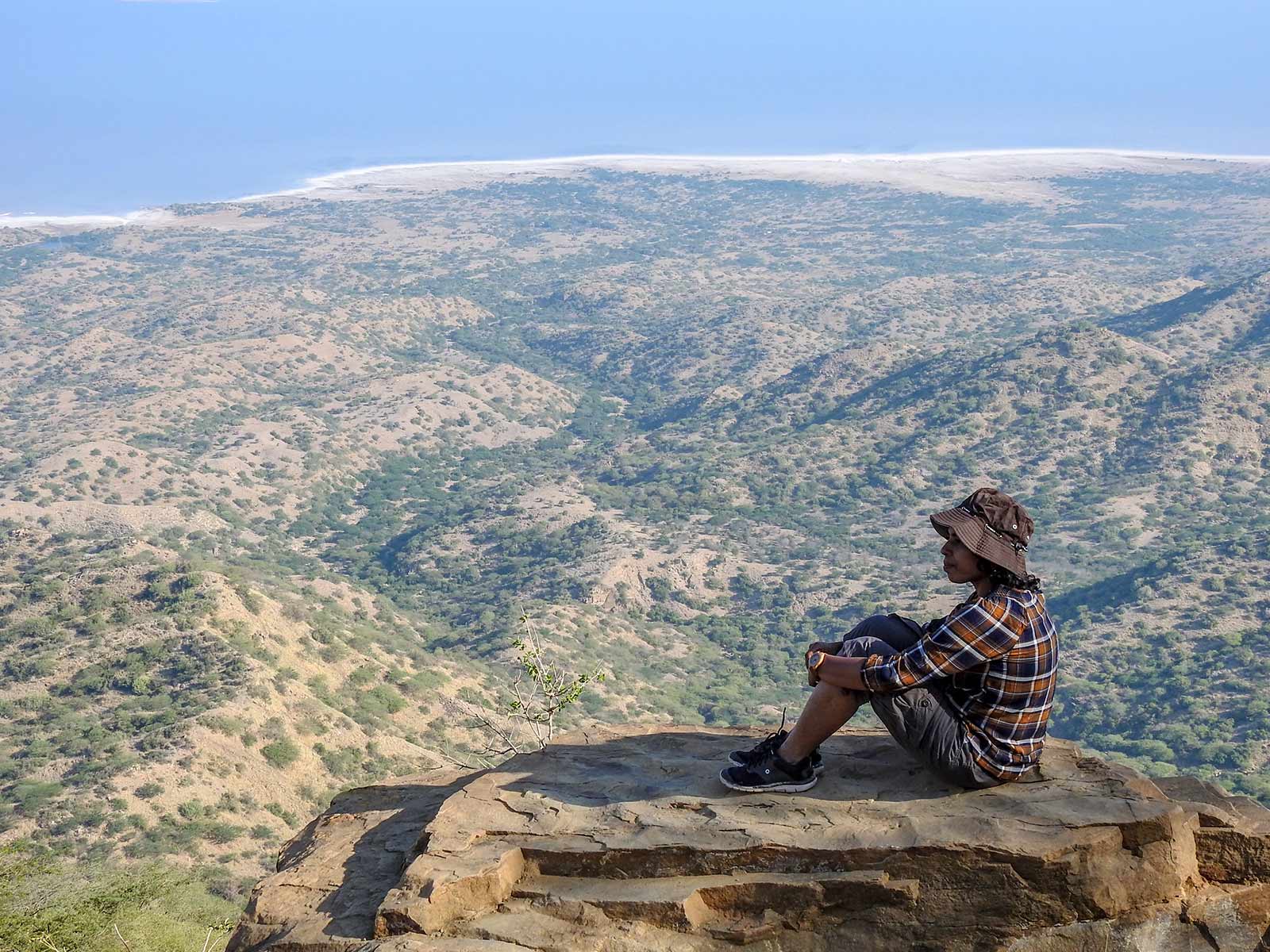
I really loved the landscape of this place and we were lucky to enjoy the serenity without any disturbance.
Sparrows were clinging onto the grasses in the agricultural fields near the villages and bushchats were sitting on the wires. Then something caught Vinod’s eye and it was the Southern Grey Shrike. We stopped to watch these birds and continued our drive on the village road. Shortly, I told vinod to stop the car as I spotted White-bellied Minivet. I quickly grabbed the camera and tried to click a photo but a car came in the opposite direction honking non-stop. The Minivet flew away immediately and we were very irritated. We were fuming about the incident till we joined the main road. We were in no mood to go to the resort now, so we decided to continue our drive to the India Bridge.
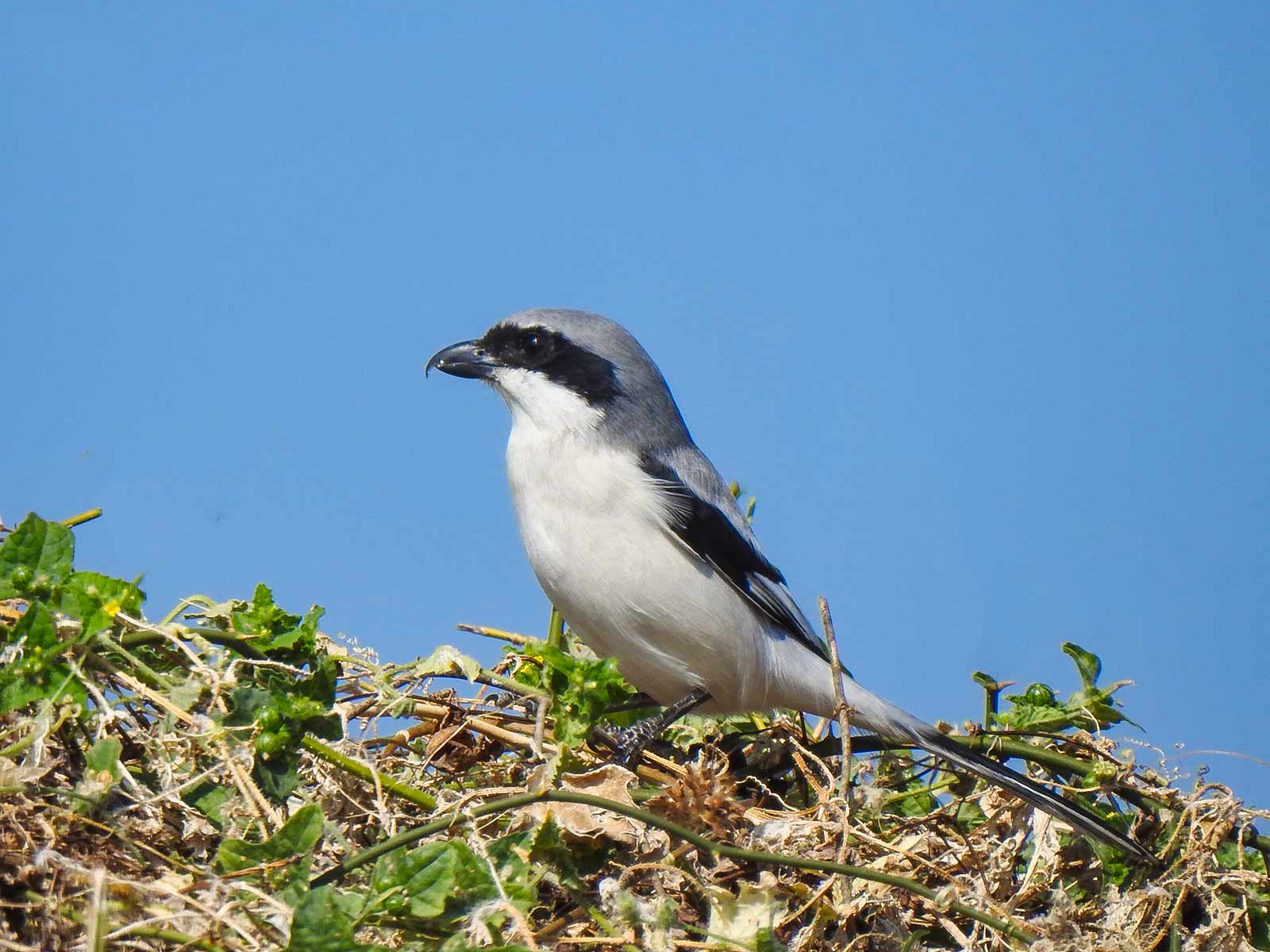
Southern grey shrike is a migratory bird to Tamilnadu. We had seen him earlier but this time we got a good video for our Indian bird videos project.
The India Bridge was the farthest most point a civilian can visit as beyond that only military personnel can visit. We saw few Army Vehicles crossing us, so I didn’t want stop our car on the roadside unnecessarily. Vinod saw a flock of Sandgrouse landing on a nearby farm land and he was very much tempted to go down in search of those birds. There were different Sandgrouses in the Kutch section, so Vinod wanted to check that flock. I was worried about the army and the shepherds who might not like tourists wandering around. To pacify Vinod, a Wheatear flew and sat very closely to us. I thought it was the Hooded Wheatear but Vinod told that was the Variable Wheatear mentioning some subtle differences.
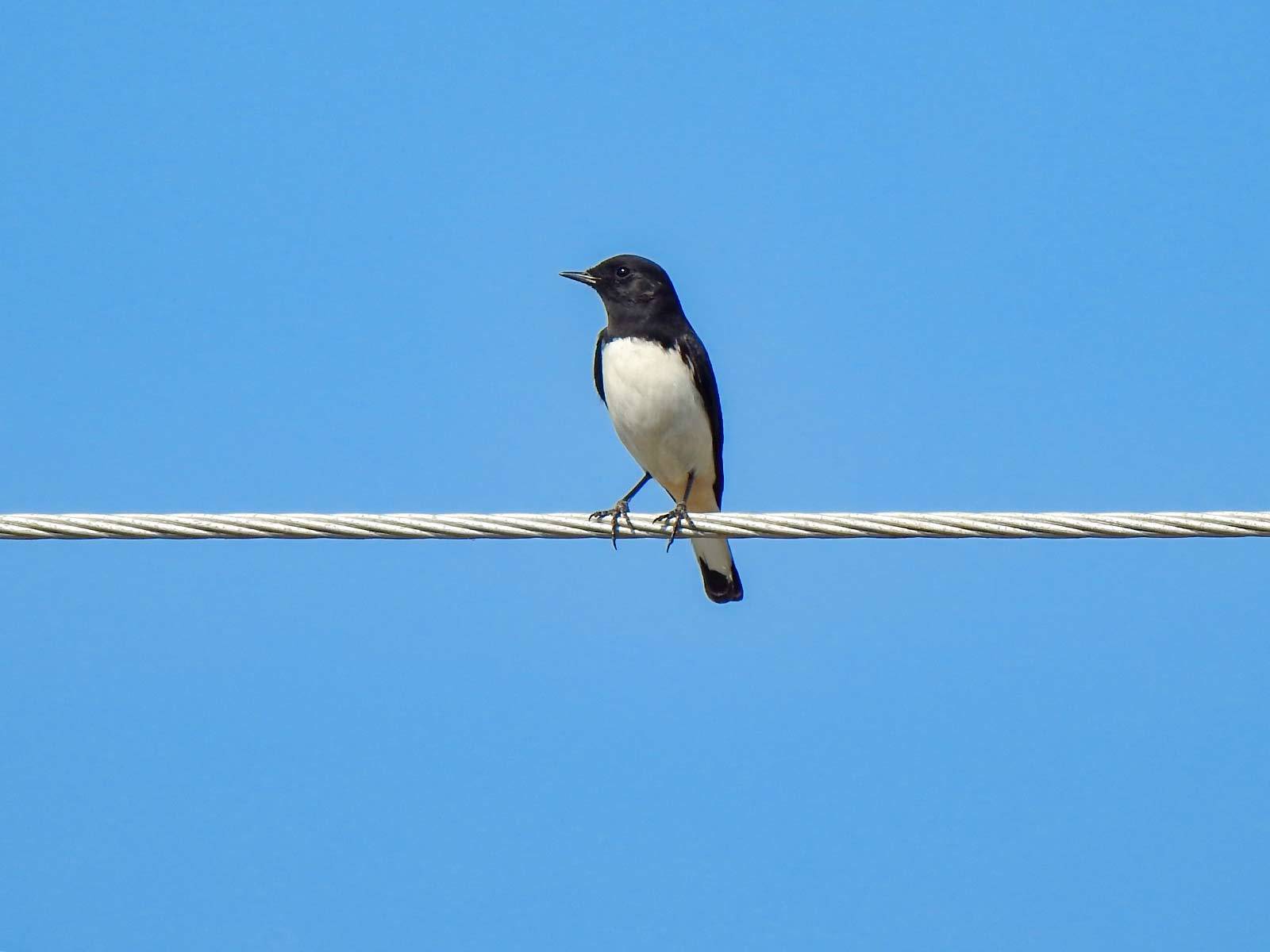
The Variable wheatear is really variable in color and it was very confusing for me to identify them in the field.
We saw Isabelline Wheatears running around everywhere and few other common birds. By now the Sunlight was very harsh but the weather was windy. The weather was one of the big worrying factor we had before the Gujarat trip but surprisingly in the entire trip we didn’t feel the hot sun. We were just looking around the terrain and the huge towers . Suddenly I saw something big sitting on one tower and I double checked to confirm that was a bird before telling to Vinod. The raptor sitting on the tower was Tawny Eagle in its dark form. We were thrilled to see the majestic bird sitting casually on the roadside.
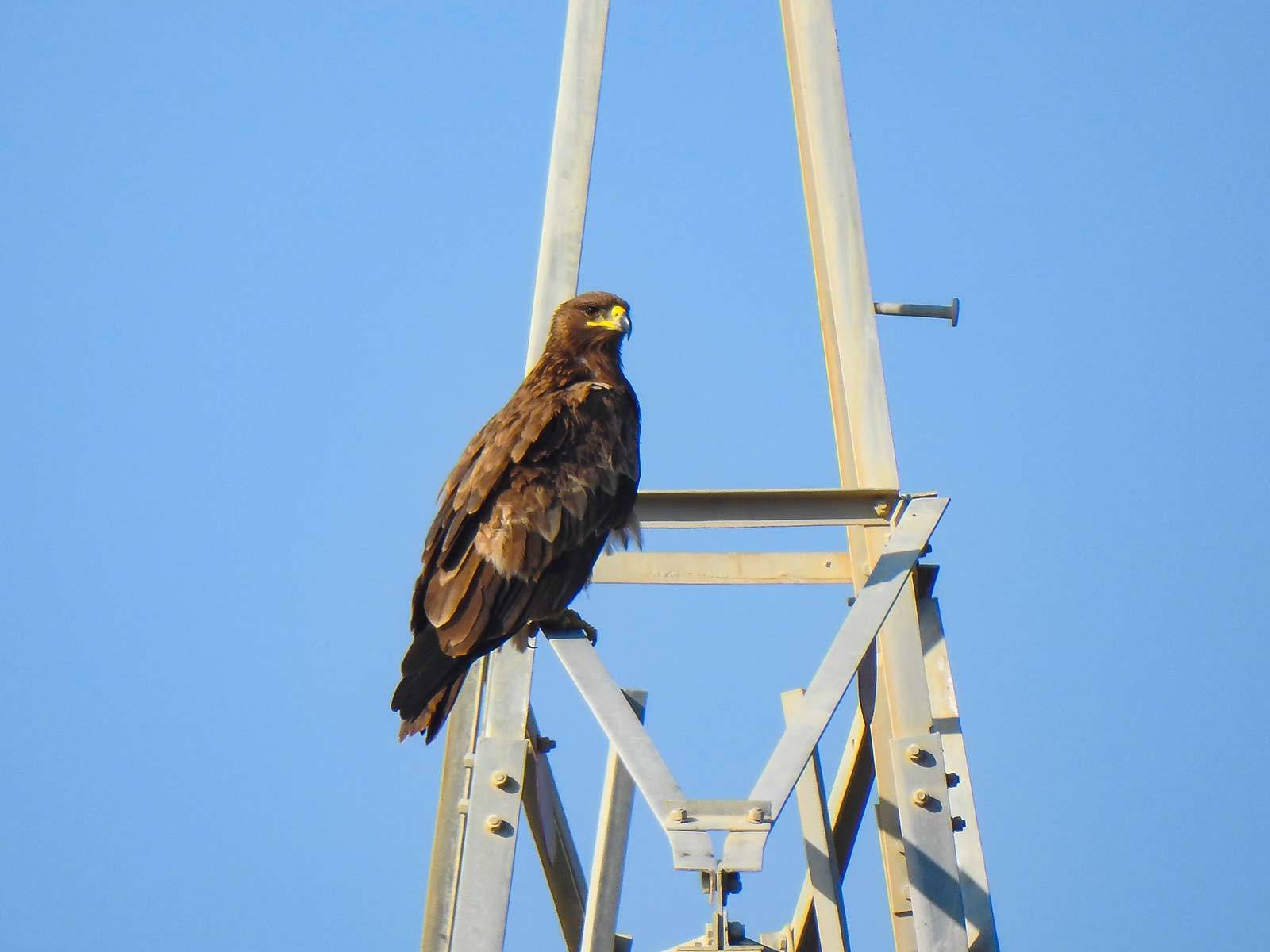
In Tamilnadu only Black Kites can be seen sitting casually on these towers, so seeing Tawny eagle on the tower was really exciting.
We reached the India Bridge and we were told not to take any photographs. The army officials were friendly and we were very excited to stand on the Indian border. On our way back, we saw few tourists getting down on a scenic spot. So we also stopped and checked the surroundings. The terrain was muddy and we saw few animals footmark. We walked around taking in the scenery infront and wondered about the animals that were living in this ecosystem. We got call from the resort wondering whether we were coming to their place. So we decided to go to the resort for some refreshment and then visit White Rann. We drove back to the resort with some memorable moments.

We watched Sunset in Great Rann Of Kutch while seeing the birds going back to their nests. The next day we witnessed the Sunset in White Rann which was more beautiful!
Good
When compared to the population density of people in that region, the open area is huge.
Bad
The roadkills were high for the amount of tourists in GRK. We saw nightjars, jungle cats and hares lying dead on the road.
Ugly
We were expecting sandy terrain in GRK but the entire region was taken over by Prosopis Juliflora. The vegetation is the key of the terrain and the living beings in that area. So with the change in vegetation all life forms are affected directly or indirectly in Rann of Kutch section.
Yeah animals and birds are stunned at the sight of fast moving vehicles..Its terrible!!
Happy to meet a fellow traveler from India 🙂 Thanks for the visit, will check your blog..
What a wonderful trip. We too were dismayed at the huge roadkill, not in Gujarat, but near Lalsot in Rajasthan. Its not very far from Ranthambhore. Sad to see jungle cats, jackals and even birds like greater coucals… I guess in some stretches the drivers are a little careless.
Great to come across your blog. Look forward to more articles…